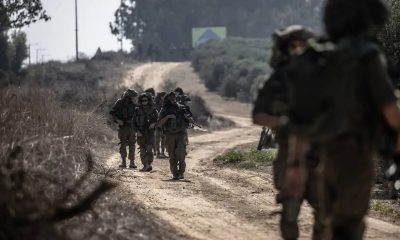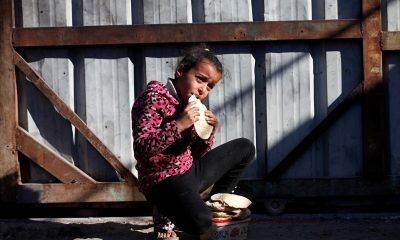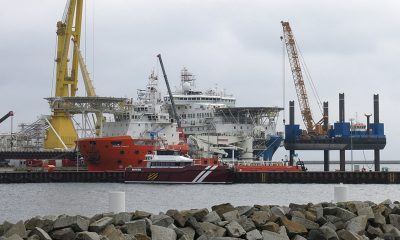MIDDLE EAST
Hezbollah, Israel exchange fire as violence spikes at Lebanese border
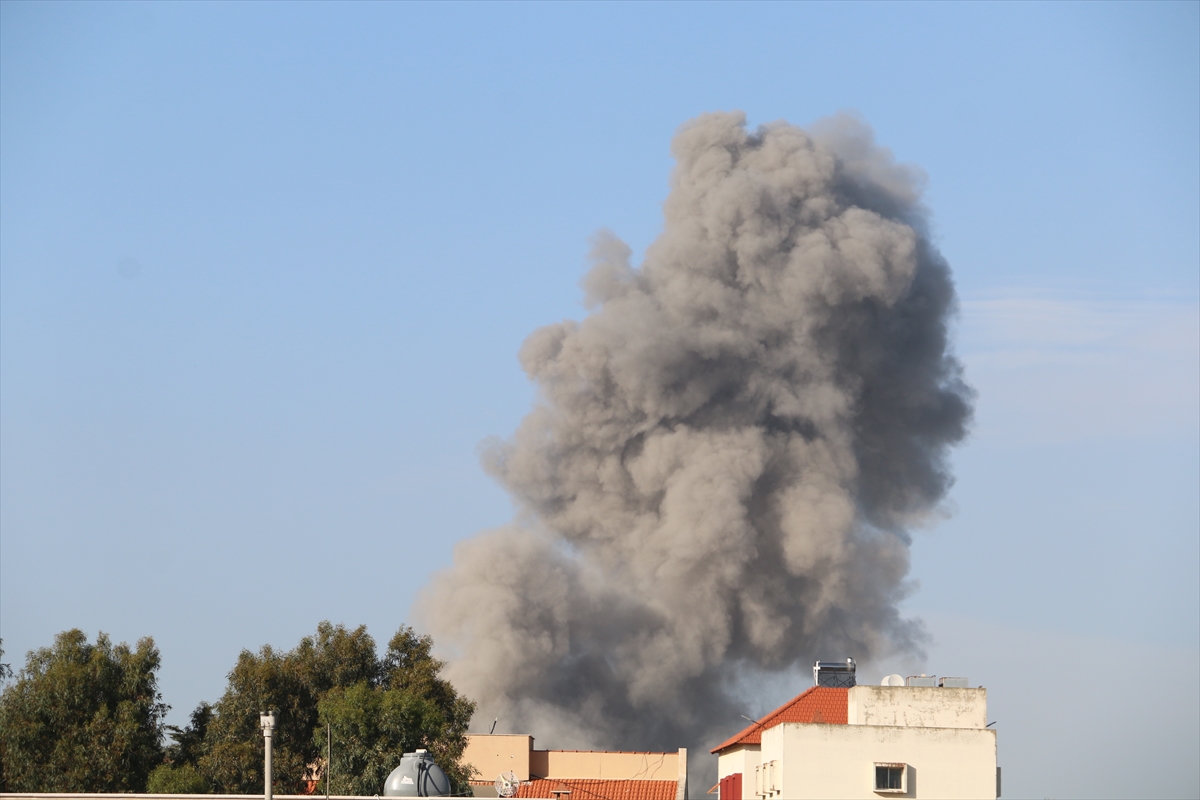
Fierce clashes between Hezbollah and the Israeli army have been going on for two days in the border area of southern Lebanon.
Israel, which is preparing to retaliate against Iran’s attack, has stepped up its attacks on southern Lebanon. It was reported that Israel attacked a town in southern Lebanon with phosphorus bombs. Hezbollah also hit the military headquarters in the village of Arab al-Aramshe, 19 Israeli soldiers were wounded in the attack, 6 of them seriously.
The Israeli army announced that the village of Arab al-Aramshe, located on the Lebanese border in northern Galilee, was attacked by a drone and an anti-tank missile, and that 19 soldiers were wounded as a result of the attack.
Footage on social media showed a kamikaze drone, reportedly sent from Lebanon, targeting an area in Arab al-Aramshe. Hezbollah announced yesterday that it had targeted the Israeli military headquarters. The statement said that the military headquarters was attacked with guided missiles and kamikaze drones and that there were dead and wounded among the Israeli soldiers.
On the other hand, according to the Lebanese official agency NNA, the Israeli army targeted the town of Khiyam, located in the south of Lebanon and on the border line, with heavy artillery shelling and phosphorus bombs. According to another report, Israeli drones targeted a building in the town of Iaat in the city of Baalbek. While it was stated that the building was targeted by 3 missiles in the attack, no information was given about the dead and wounded.
Hezbollah gave information about the losses and attacks in the clashes with Israel over the past two days. The statement said that Israeli soldiers were targeted in the Metula settlement on the border with Israel while trying to tow a military vehicle that had been hit earlier, and that there were dead and wounded among them.
Hezbollah also said that Israel attacked the Malikiye position, also on the border.
Hezbollah said 2 more of its members had been killed in clashes with Israel.
This brings to 278 the number of Hezbollah members killed in clashes with the Israeli army on the border since 8 October.
In addition, 54 Lebanese civilians, 18 members of the Amal movement, 13 members of Hamas, 12 members of Islamic Jihad, 7 Israeli civilians and 11 soldiers were killed in the clashes.
Travel warning from Turkish Foreign Ministry
The Turkish Foreign Ministry has issued a travel warning for some provinces in Lebanon following the intensification of clashes on the border. In its announcement on the issue, the ministry advised Turkish citizens to be cautious and not to travel to Nabatiyeh, South Lebanon, Bekaa and Baalbek-Hermel provinces unless absolutely necessary.
US sanctioned, Mossad executed
Meanwhile, Lebanon’s interior ministry blamed Israel’s Mossad for the death of Lebanese businessman Mohammed Srur, who had previously been placed on a US sanctions list for allegedly transferring money to Hezbollah and Hamas on behalf of Iran.
Lebanese Interior Minister Bessam Mawlawi told the Associated Press (AP) that the Mossad was behind the execution of Srur, a 57-year-old exchange house owner who was found dead after being kidnapped in the Metin district north of Beirut on 10 April: “The way the murder was carried out led us to this conclusion.
Mawlawi said the suspects had rented a three-storey villa in Beirut’s Beit Meri neighbourhood before the incident using fake Lebanese identity cards, adding that security units had analysed footage of the suspects entering and leaving the city to identify them.
Noting that many bullet marks were found on Srur’s body, Mevlevi said that the investigation into the murder was ongoing and would be shared with the public and judicial authorities when it was completed.
The US Treasury Department’s Office of Foreign Assets Control (OFAC) announced in 2019 that Srur had been placed on the sanctions list for transferring money to Hezbollah and Hamas on behalf of the Iranian Revolutionary Guard Corps.
MIDDLE EAST
Israel’s reserve crisis deepens amid Gaza plans

As the Israeli army prepares to intensify its attacks in Gaza, the crisis within its reserve forces, considered the “backbone of the army,” is growing.
According to a report in Haaretz, tens of thousands of reserve soldiers are expected to be recalled to duty as Israel prepares to escalate its operations in Gaza. However, army officials report that motivation is declining, and an increasing number of reservists are stating they will not report for duty. Officials indicate that the reasons for this drop in motivation include war fatigue, the lack of clear objectives for the ongoing conflict, and anger towards government policies.
A senior reserve commander informed Haaretz that brigade and battalion commanders are handling numerous cases involving reserve soldiers refusing to report for duty. The most frequently cited reason is the perception that the government is making insufficient efforts to rescue the hostages. This is followed by anger over the proposed law exempting ultra-Orthodox Jews from military service and discontent regarding judicial reform plans.
Another reserve officer reported that soldiers and commanders suffer from severe burnout after serving hundreds of days over the past year. He expressed that they struggle to commit to new missions not only for political reasons but also due to physical and psychological fatigue.
Among those refusing service is combat pilot Alon Gur, who publicly announced his resignation last week after 16 years of service. Declaring his departure from the Air Force, Gur stated on social media, “The line has been crossed,” accusing the government of “prioritizing politics over human life.” After Gur was relieved of duty, other reserve soldiers began taking similar actions, causing significant concern within the army command.
According to Israeli army data, as of February, the reserve participation rate stood at 85%. At the start of the war, however, almost all called-up reservists reported for duty, marking the highest reserve mobilization in Israeli history.
Israel, with its relatively small population, relies on its reserve forces system to sustain the army during prolonged conflicts. This system, which involves recalling individuals who have returned to civilian life after compulsory military service back to active duty when needed, is considered one of the cornerstones of Israel’s security doctrine. This system allows tens of thousands of experienced soldiers to be rapidly deployed to the front lines during times of war or crisis.
MIDDLE EAST
Hamas retains guerrilla capacity and political role in Gaza, says US intelligence

According to the 2025 Threat Assessment Report from the US Intelligence Community, the umbrella organization for 18 separate intelligence agencies, Hamas retains the capacity to sustain low-intensity guerrilla warfare and remains a primary political actor in Gaza. In Lebanon, Hezbollah, noted as weakened post-war, is still described as posing a threat to Israel and the US.
According to a report in Haaretz, the assessment predicted that “tension will persist regarding the situation in Gaza, as well as in the Israel-Hezbollah and Israel-Iran dynamics” and stated that Hamas “will continue to pose a threat to Israel’s security even in its weakened state.”
The report also noted that Hamas’s October 7 attack on Israel disrupted the diplomatic progress achieved through the Abraham Accords and the trend toward stability in the Middle East.
Pointing out that Hamas has preserved thousands of its fighters and a significant portion of its underground infrastructure, the report warned that the organization “likely used the ceasefire to bolster its military capacity and replenish ammunition stocks.”
The report stated, “Hamas retains the capacity to reignite low-intensity guerrilla resistance and will remain the dominant political actor in Gaza for the foreseeable future. The low expectations among the parties for a permanent ceasefire and the absence of a post-war political and reconstruction plan point towards instability that could last for years.”
Noting that support for Hamas among Palestinians in the West Bank is higher compared to the Palestinian Authority, the report assessed that “the long-term trajectory of Israeli-Palestinian relations will depend on developments in the increasingly unstable West Bank.”
The report also highlighted that the Palestinian Authority’s capacity to provide security and public services in the West Bank is progressively weakening, emphasizing that Israeli operations in the West Bank, attacks by Jewish settlers, and the activities of Palestinian armed groups, including Hamas, could further deepen the governance crisis.
It added, “A potential leadership change within the Palestinian Authority could exacerbate governance challenges. Furthermore, how Israel will govern post-war Gaza and whether its operations in the West Bank will undermine the Palestinian Authority will also be crucial factors.”
The report also drew attention to the fragile dynamics between Israel and Lebanon, warning that a resumption of large-scale Israeli operations in Lebanon could heighten sectarian tensions, weaken Lebanese security forces, and worsen the humanitarian crisis.
The report concluded, “Despite being weakened, Hezbollah retains the capacity to target Americans and US interests regionally and globally, and even, to a limited extent, on US soil.”
MIDDLE EAST
US presents conditions to HTS for potential sanctions relief

According to six sources speaking to Reuters, the US has presented Hayat Tahrir al-Sham (HTS), which seized power in Syria, with a list of conditions to fulfill in exchange for partial sanctions relief. These conditions reportedly include ensuring foreigners do not hold senior management roles.
Two individuals, an American official and a Syrian source knowledgeable about the matter, told the news agency that US Deputy Assistant Secretary of State for Levant and Syria Natasha Franceschi conveyed the list of demands during a face-to-face meeting with Syrian Foreign Minister Asaad al-Shaybani. The meeting took place at the Syria donors conference in Brussels on March 18.
The sources indicated that the conditions put forward by the US include Syria “destroying its remaining chemical weapons stockpiles” and “cooperating in the fight against terrorism.”
Additionally, American officials and one source in Washington stated that another demand involves ensuring foreign militants are not appointed to senior government positions within Syria’s administrative structure. Criticism had previously arisen over Syria’s appointment of thousands of foreign militants—including Uyghurs, Jordanians, Chechens, and individuals of other nationalities—to the defense ministry.
According to two sources, Washington also requested that Syria appoint a liaison officer to assist in efforts to locate US journalist Austin Tice, who disappeared in Syria more than a decade ago.
The source also indicated that the US wants Syria to issue a statement supporting its own territorial integrity.
Washington reportedly did not provide a specific timeline for the fulfillment of these conditions.
While the HTS administration has not commented on the matter, the US State Department stated, “We do not discuss our private diplomatic conversations publicly.”
Department spokesperson Tammy Bruce mentioned last week that Washington is monitoring the actions of the interim administrators.
-
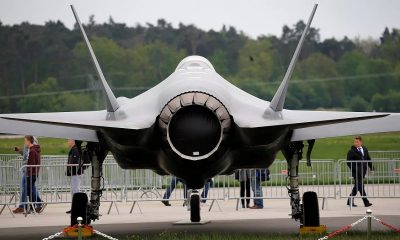
 EUROPE6 days ago
EUROPE6 days agoF-35 debate intensifies across Germany and Europe
-
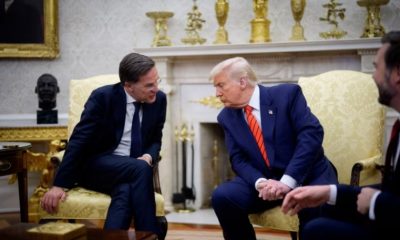
 EUROPE1 week ago
EUROPE1 week agoEurope plans for US absence in NATO with 5-10 year strategy
-

 ASIA2 weeks ago
ASIA2 weeks agoChina’s AsiaInfo expands with DeepSeek-powered AI
-
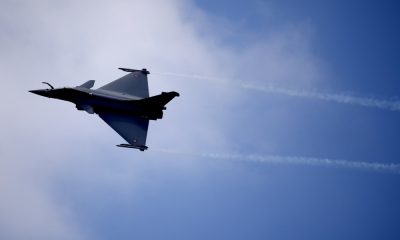
 EUROPE2 weeks ago
EUROPE2 weeks agoFrench defense industry gears up for war amid EU strategic autonomy push
-

 DIPLOMACY7 days ago
DIPLOMACY7 days agoTrump’s proposed fees on Chinese ships threaten US maritime industry
-

 AMERICA2 weeks ago
AMERICA2 weeks agoTrump’s tariffs drive Nvidia to invest heavily in US manufacturing
-

 ASIA6 days ago
ASIA6 days agoBeijing’s energy rules threaten Nvidia H20 chip sales in China
-
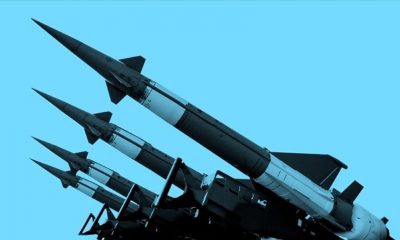
 EUROPE7 days ago
EUROPE7 days agoCalls for German nuclear armament grow louder




